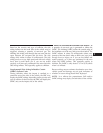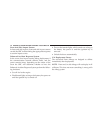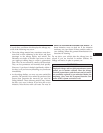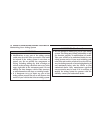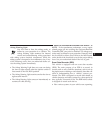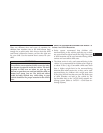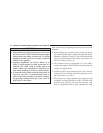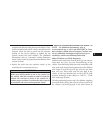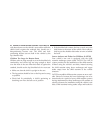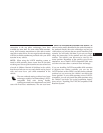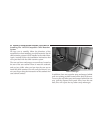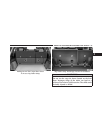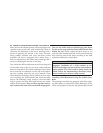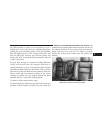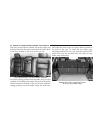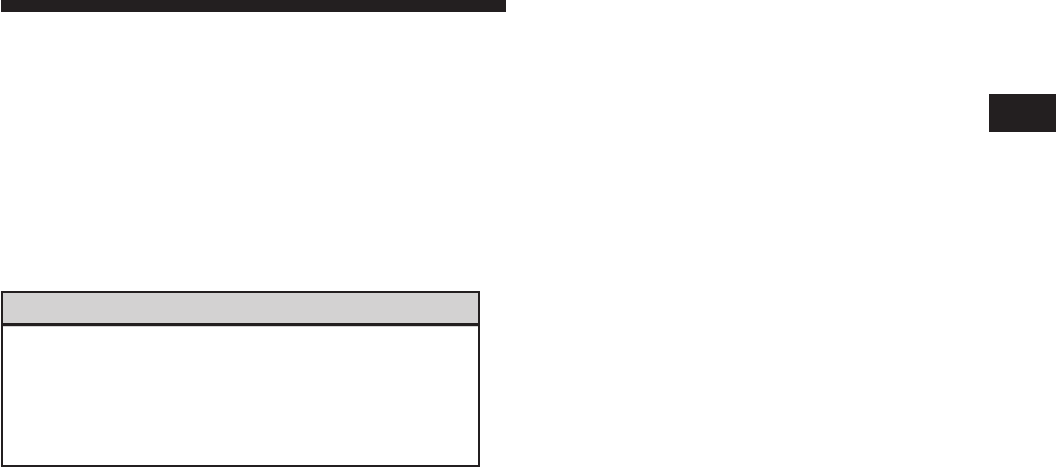
restraint and slide the latch plate into the buckle. Then,
pull the shoulder belt until it is fully extended from the
retractor. Allow the belt to return into the retractor,
pulling on the excess webbing to tighten the lap
portion around the child restraint. For additional
information refer to ЉAutomatic Locking Retractors
ModeЉ earlier in the Occupant Restraints Section of the
owners’ manual.
•
Buckle the child into the restraint exactly as the
manufacturer’s instructions tell you.
WARNING!
When your child restraint is not in use, secure it in
the vehicle with the seat belt or remove it from the
vehicle. Do not leave it loose in the vehicle. In a
sudden stop or accident, it could strike the occupants
or seatbacks and cause serious personal injury.
NOTE: For additional information, refer to
www.seatcheck.org or call 1–866–SEATCHECK. Cana-
dian residents, should refer to Transport Canada’s web-
site for additional information. http://www.tc.gc.ca/
roadsafety/ safedrivers/childsafety/index.htm
Older Children and Child Restraints
Children who weigh more than 20 lbs (9 kg), and who are
older than one year, can ride forward-facing in the
vehicle. Forward-facing child seats and convertible child
seats used in the forward-facing direction are for children
who weigh 20 to 40 lbs (9 to 18 kg), and who are older
than one year. These child seats are also held in the
vehicle by the lap/shoulder belt or the LATCH child
restraint anchorage system (Refer to LATCH — Child
Seat Anchorage System.)
The belt-positioning booster seat is for children weighing
more than 40 lbs (18 kg), but who are still too small to fit
the vehicle’s seat belts properly. If the child cannot sit
2
THINGS TO KNOW BEFORE STARTING YOUR VEHICLE 83



